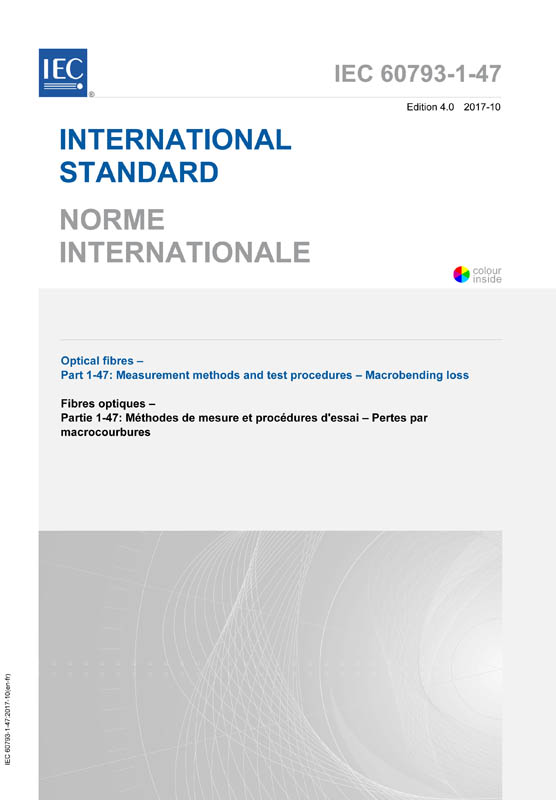IEC 60793-1-47:2017 establishes uniform requirements for measuring the macrobending loss of single-mode fibres (class B) at 1 550 nm or 1 625 nm, category A1 multimode fibres at 850 nm or 1 300 nm, and category A3 and A4 multimode fibres at 650 nm, 850 nm or 1 300 nm, thereby assisting in the inspection of fibres and cables for commercial purposes. This document gives two methods for measuring macrobending sensitivity:
- Method A – Fibre winding, pertains to class B single-mode fibres and category A1 multimode fibres.
- Method B – Quarter circle bends, pertains to category A3 and A4 multimode fibres.
For both of these methods, the macrobending loss can be measured utilizing general fibre attenuation techniques, for example the power monitoring technique (see Annex A) or the cut-back technique (see Annex B). Methods A and B are expected to produce different results if they are applied to the same fibre. This is because the key difference between the two methods is the deployment, including the bend radius and length of fibre that is bent. The reason for the difference is that A3 and A4 multimode fibres are expected to be deployed in short lengths with a smaller number of bends per unit fiber length compared to single-mode and category A1 multimode fibres. In this document, the 'curvature radius' is defined as the radius of the suitable circular shaped support (e.g. mandrel or guiding groove on a flat surface) on which the fibre can be bent. In addition, informative Annex E has been added to approximate bend loss for class B single-mode fibres across a broad wavelength range at various effective bends. This fourth edition cancels and replaces the third edition published in 2009. It constitutes a technical revision. This edition includes the following significant technical changes with respect to the previous edition:
- former Annex A has been renumbered to Annex D;
- introduction of new Annex A on the transmitted power monitoring technique;
- introduction of Annex B on the cut-back technique;
- introduction of Annex C on the requirements for the optical source characteristics of A1 multimode measurement;
- introduction of Annex E on parallel plate (2-point) macrobend loss approximation.
Keywords: macrobending loss of single-mode fibers


